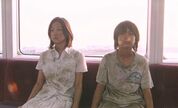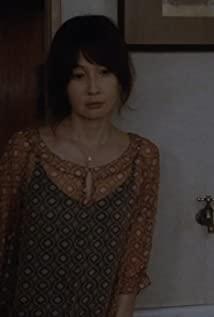This is the last part of the final assignment of the online class "Film and Television Culture" at home after the summer vacation of the new crown epidemic in 2020.
Tiny Details - Reality and Pain of Reality This film feels warm despair, hopeless tenderness, and the distressing independence of children. The kind and attentive Kyoko wiped off the stool that Koyuki stood on with his hands - this is a very small and moving detail, and the burrs that are not cut off by the narrative make the whole film more lifelike. Bella Tal said: "I prefer my films to have an event in life that the audience can understand naturally, and can also get a deeper explanation." Returning, Ming saw his mother waving goodbye to a car by the window. When Keiko opened the door, Ming immediately pretended to lie on the table and sleep. Why pretend to lie down - I don't know how to face such a mother, this is a contradictory state of mind, the contradiction is that dissatisfaction and love are intertwined. Keiko's return is a lost return, dissatisfied with the loss of her mother, but she finally returned with a sigh of relief. There is a mixture of dissatisfaction and love in the sigh of relief. The two are contradictory, and they have no intention of being too happy. , is not too resentful, what should the two contradictory go from? You can only pretend to ignore, pretend not to know, ignore by the sidelines. Immediately after the mother received a phone call from karaoke, we once again saw the safety of the children and their powerless emptiness through the gaze of the children. The very subtle and vivid details reproduce the sense of contradiction and tearing of life in that situation. It was Hirokazu Koreeda who created and processed "No One Knows" by using the realistic technique. On the one hand, Hirokazu Koreeda let us see this documentary-style film, which has a rough texture and a documentary-like documentary feeling. For example, the natural camera shake on the bus at the beginning of the film, as well as the direct application of realistic sounds, and the realistic close-up shots. On the other hand, in terms of content, the film shows a sense of pain in reality, a sense of powerlessness towards reality - I have been thinking about my sister's death and Ming's reaction to this for a long time - the dramatic sudden change that broke into, at night, Buried with red shoes, suitcases, and trembling hands, after this series of tense and depressing action scenes unfolded, it was Ming and girls, two faces that could not be described in words, let's call them "barren" faces. The emotional state of my sister that her fresh life has ended, cannot be shown with a wailing, because it is too deep and heavy, for the present and the future. And the appearance of this seemingly "nothing" desolate face, for me, the language of the camera at this time is "restraint", Ming and his sister and brothers will continue to live, and live with the memories of their sister from time to time. , and go on with a "premature" understanding of life. Children's survival and life is also restrained - we are born broken, and we live to mend. To survive, to survive and live in your own way in that situation, this is a strong sense of life. What is the most important thing in a movie? If it is the movie itself, is there anything more important than the movie? If there is, it should be life itself. Perhaps, we are not only looking at the film itself and the creative concept of the film itself, but also looking at all kinds of world conditions and watching "life flows on the screen".
View more about Nobody Knows reviews









